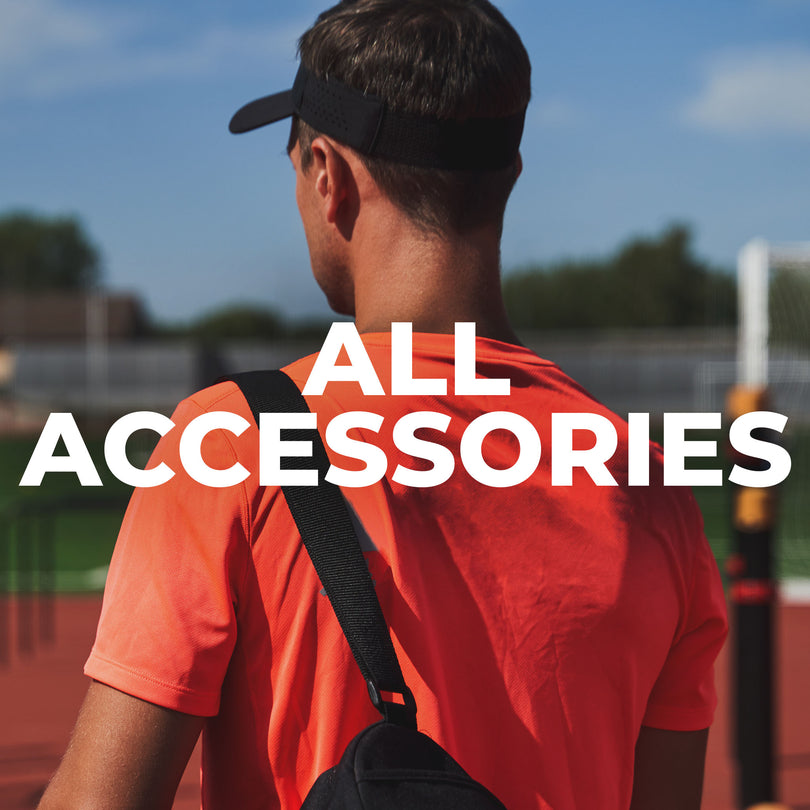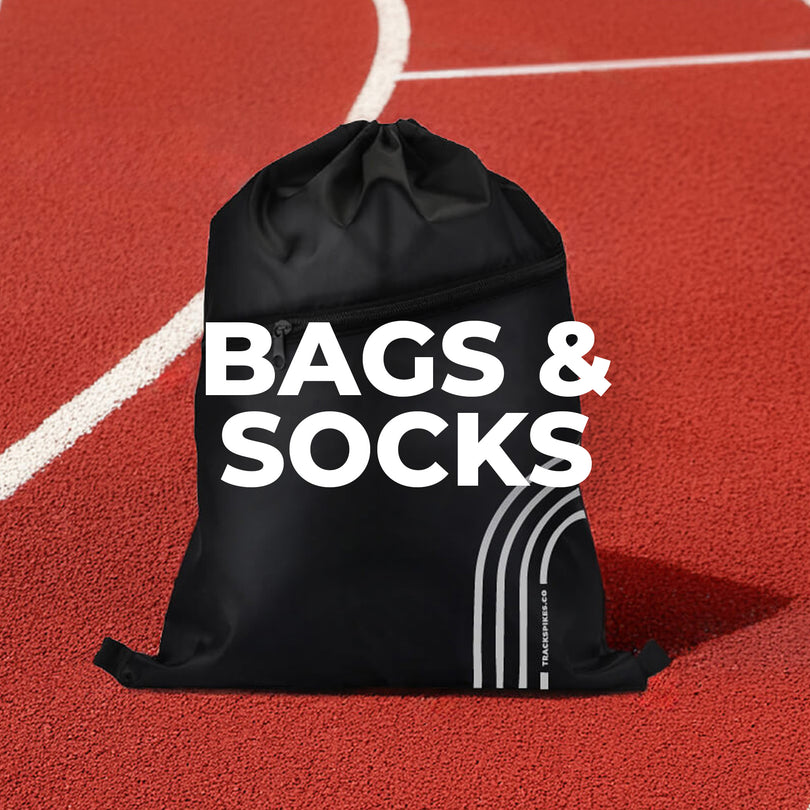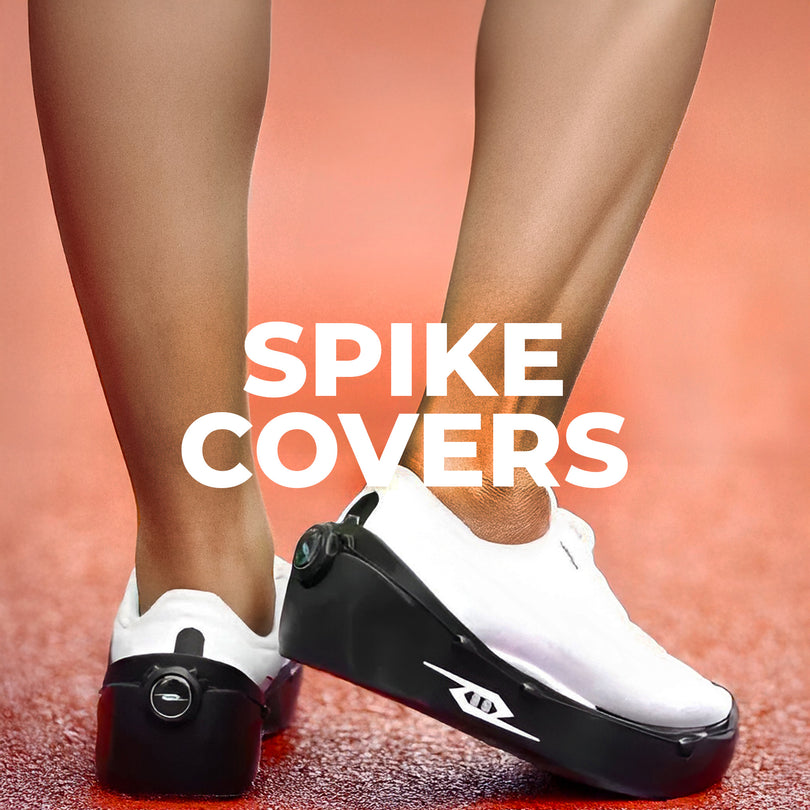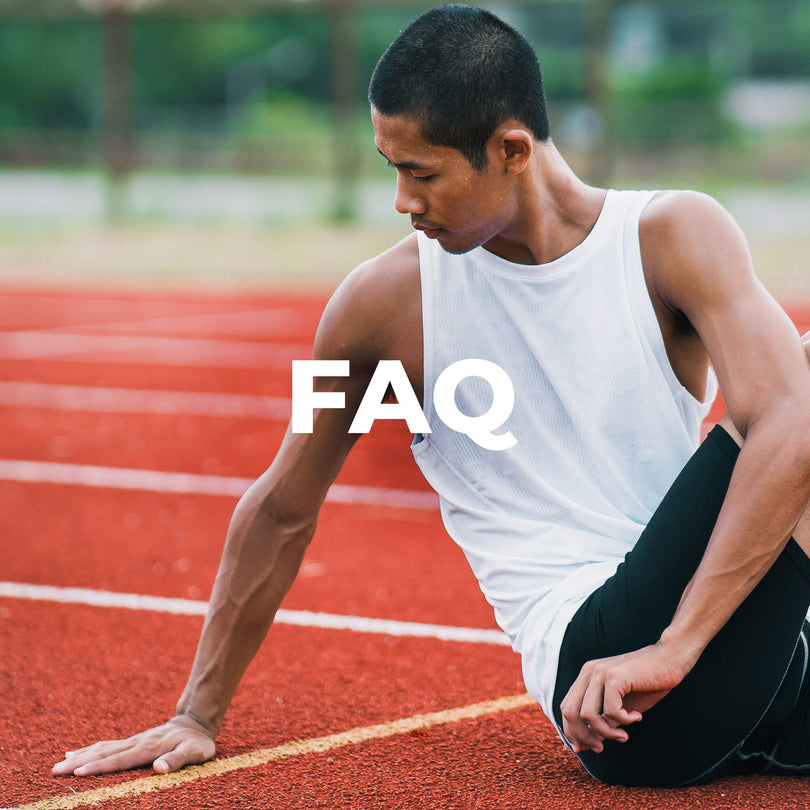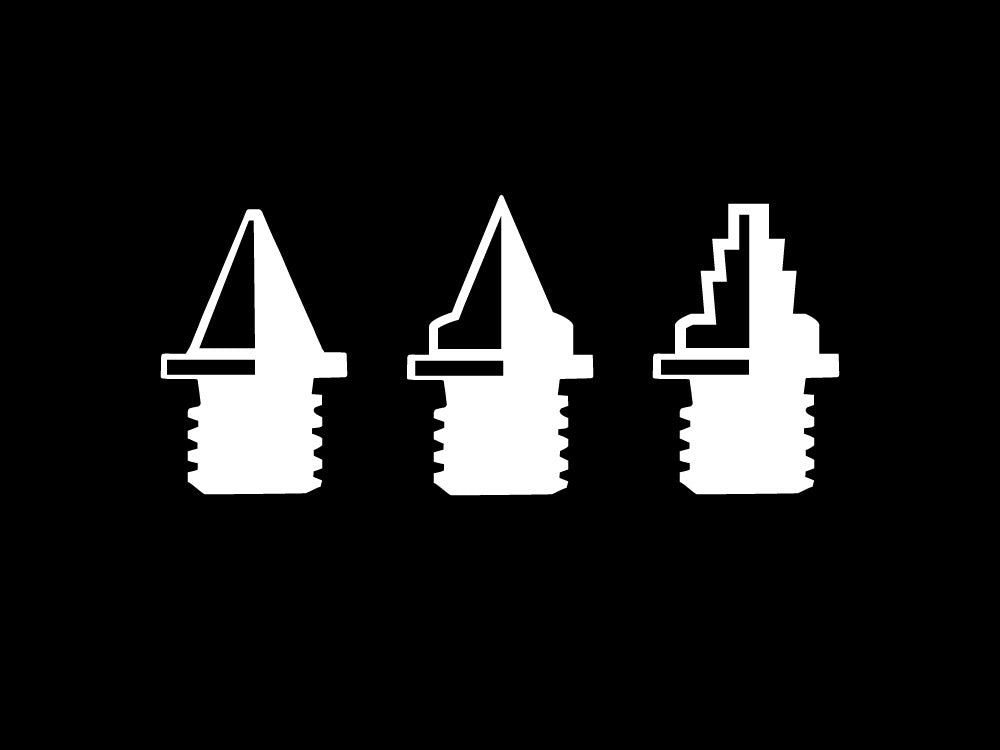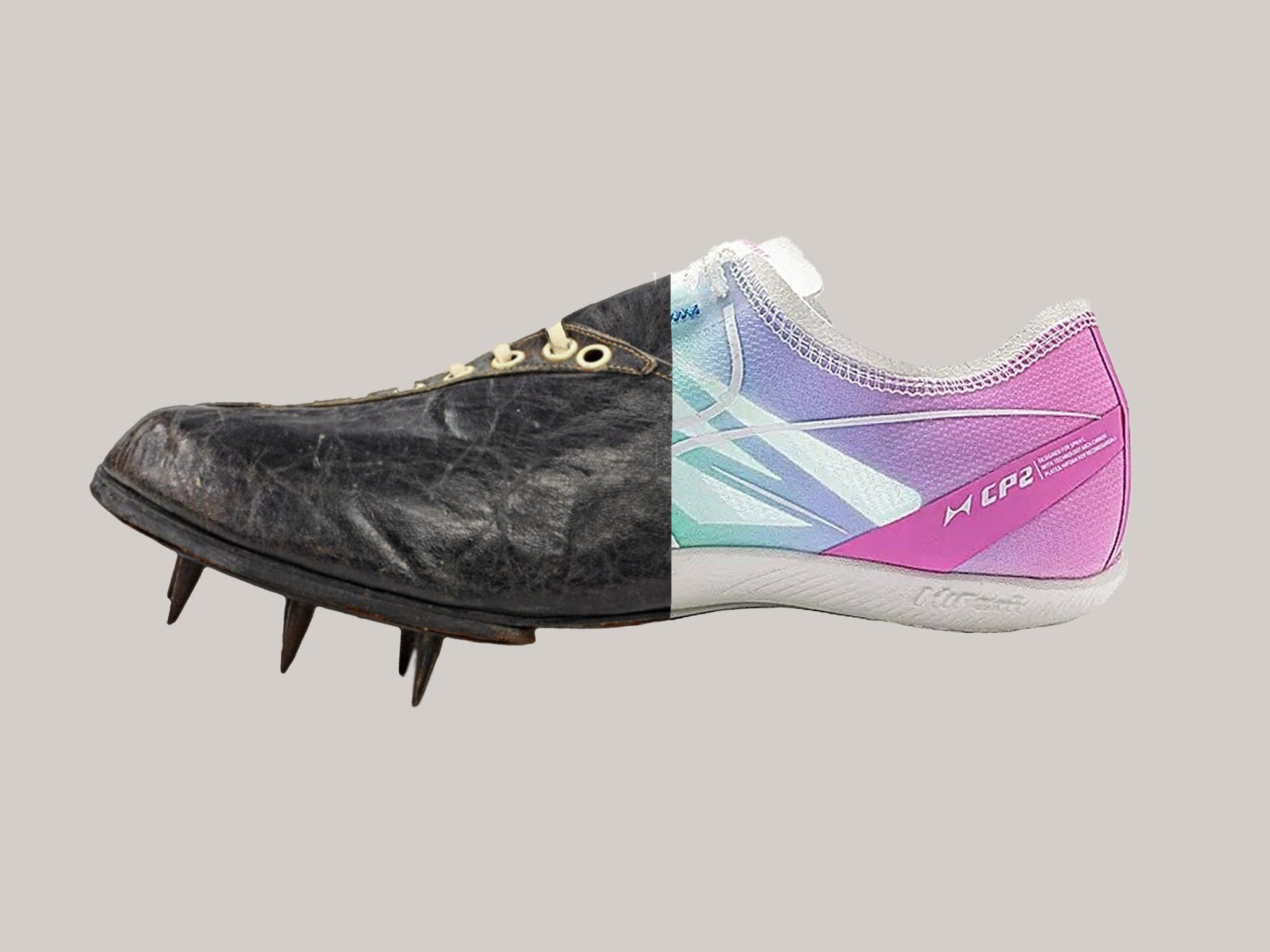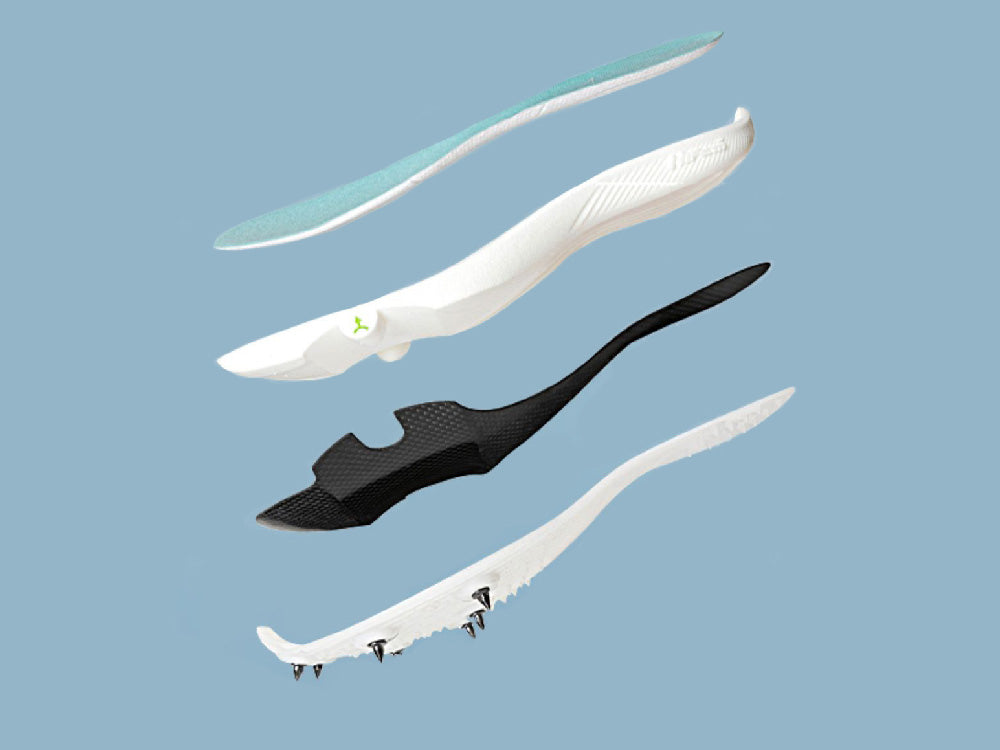When trying to run your best times, most consideration goes into the shoes on an athlete’s feet. However, not nearly as much thought goes into the spike pins used with the shoes, which is crazy when you think about the difference that using different pins can have on performance.
Below is everything you’ll need to know to set your track shoes up for optimal performance on race day.
What Are Spike Pins?
Spike pins are spikes that screw into the bottom of track shoes to provide grip and traction on a variety of different surfaces. They are most commonly made of metal and come in various shapes and sizes, depending on their desired usage.
Shoes designed for specific events will have different numbers of spike holes. Sprinting spikes will usually have 5-8 screw holes for pins located under the front of the foot, while an high jump spikes will have more screw holes spread out across the entire underside of the shoe.
How to Choose the Best Pins
The best pin choice comes down to the event they are for. They can vary in length and shape, so selecting the correct pins can make a big difference.
Spike Type
The type of spike is the first thing to consider when purchasing new pins. The three most common types of pins are pyramid, needle, and Christmas tree spikes. Various pins may not be allowed on every track surface, so knowing what kind of surface you’ll be racing on and their rules regarding pin type and size is imperative.
Regardless of size or style, most track spikes are made of stainless steel or composite materials.

Pyramid Spikes - For track running, pyramid spikes are the most common type of pin used. They are named for their shape, featuring a broad base that tapers to a pointed tip.
Pyramid spikes are excellent all-around pins, suitable for any track or field event. They are also permitted on most tracks, as they do the least damage to the surface compared to other pin types.

Needle Spikes - Due to their thin, needle-like shape, needle spikes provide incredible grip on most track surfaces. However, they cause damage to most track surfaces and, therefore, aren’t allowed at most track facilities.
As they aren’t allowed on most tracks, needle spikes are often used for cross-country racing, as they provide exceptional grip on muddy, wet, or slippery surfaces.

Christmas Tree Spikes - Christmas tree spikes are quite different in appearance from the other pin styles. They feature stacked layers of different widths and provide excellent grip on most track surfaces while not sticking to the surface like other spikes are known to do.
As they cause damage to the track surface, Christmas tree spikes aren’t allowed at many track facilities.
Length
Length is the next thing to consider when purchasing pins, as the length can have just as much of an effect on the performance as the shape does. Too short of a pin, and you don’t get all of the traction benefits. Too long of a pin, and they can get stuck in the track surface, causing unnecessary friction with each stride. Picking the right length is as important as choosing the correct shape.
The race and track surface will determine your correct pin length. Below is a helpful chart for pin length by event.
Long Distance = 3 mm
Mid Distance = 3 - 5 mm
Sprint Spikes = 6 mm
Jumping Spikes = 6 - 9 mm
Javelin Spikes = 9 - 12 mm
Cross-Country Spikes = 6 - 15 mm (Depending on terrain and conditions)
Having a few sizes and shapes of pins in your track bag will allow you to quickly modify your shoes to suit several different events. It can also help avoid the hassle of not having the correct pins for the track surface and having to run in non-spiked shoes.
How to Change Spike Pins
Spike pins are easy to change; you only need a spike wrench, or a pair of pliers if the spikes get quite worn out. They can be changed out in a matter of seconds, allowing you to change the setup of your spikes before each event if needed.
Remove the old spikes
Slide your spike wrench over the spike you want to remove. Turn the wrench counterclockwise to loosen and remove the spike. Continue this step until all the pins you need to remove are uninstalled.
Clean the spike holes
Before putting new spikes back in the holes, they must be free of dirt and debris. If there is any dirt in the holes, any small, pointy object, such as a small screwdriver or even a stick, can be used to scrape them out. Once they are clean, or if there is no debris, continue to the next step.
Select new pins
Choose the size and style of pin that you’ll be reinstalling, depending on the event you are preparing for. Double-check with event organizers about any sizes or types not allowed at that particular track to avoid issues.
Install the new spikes
After selecting your new pins, gently screw them in by hand into the holes. By starting them by hand, you’ll be able to feel if there is any debris left in the holes. If they thread in okay, grab your spike wrench and turn the spikes clockwise until you begin to feel tension.
Once you feel light tension, turn another ¼ to ½ turn to ensure they are correctly seated. Do not over tighten them, as this can damage the soles of your shoes. It can also make it quite challenging to remove them the next time you need to replace them.
Double-check the tightness
Once you’ve installed all the pins, double-check the tightness on all the spikes. It can be easy to overlook one or two pins if you change them in a rush, which would be less than ideal during a race.
Test them before racing!
Before getting onto the start line, walk around on the track surface with your spikes a bit first. Doing this will help ensure you have the traction you were looking for and check that you don’t have any loose pins.
You most likely have a loose pin if you can hear a metallic clicking sound when you walk or run.
Having the correct track shoes for your event is essential, but having the right pin style and size is just as important. By not taking advantage of the extra traction that can be provided by changing pins, you may be leaving extra time on the track, meaning you likely aren’t achieving your true personal bests.








